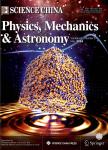Fermi polarons in a driven-dissipative background medium
Fermi polarons in a driven-dissipative background medium作者机构:School of PhysicsBeijing Institute of TechnologyBeijing 100081China Department of ScienceChongqing University of Posts and TelecommunicationsChongqing 400065China
出 版 物:《Science China(Physics,Mechanics & Astronomy)》 (中国科学:物理学、力学、天文学(英文版))
年 卷 期:2022年第65卷第11期
页 面:97-106页
核心收录:
学科分类:07[理学] 070201[理学-理论物理] 0703[理学-化学] 0702[理学-物理学]
基 金:supported by the National Natural Science Foundation of China (Grant Nos. 11704029, and 12174024) supported by the National Natural Science Foundation of China (Grant No. 11504038)。
主 题:quantum Zeno dynamics open systems quantum statistical methods decoherence
摘 要:The study of the polaron of an open quantum system plays an important role in verifying the effectiveness of an approximate many-body theory and predicting novel quantum phenomena in open quantum systems. In a pioneering work, Piazza et al.(2021) proposed a Fermi-polaron scheme with a lossy impurity, which exhibits a novel long-lived attractive polaron branch in the quantum Zeno limit. However, we have encountered a counterpart problem in which an impurity interacting with an open quantum bath scatters exciting polarons, which is what we focus on. In this work, we determine through analytical research the molecular state under the two limits of vanishingly small and infinitely large dissipation intensities as well as the reason why the dissipation range leads to a decrease in the gap between the molecular state and the molecule-hole continuum in the former case.The spectrum functions of molecular and polaron states with different dissipation ranges and loss rates are investigated. We find the spectral signals of molecular and polaron states will first diffuse and then revive as the dissipation increases. Moreover, we show that the attractive and repulsive polarons respond differently to an increasing dissipation range in our model. Finally, we exhibit the polaron energy, residue, effective mass, and two-body decay for mass-balanced and imbalanced systems. Our results might be useful for cold-atom experiments on open quantum systems.



